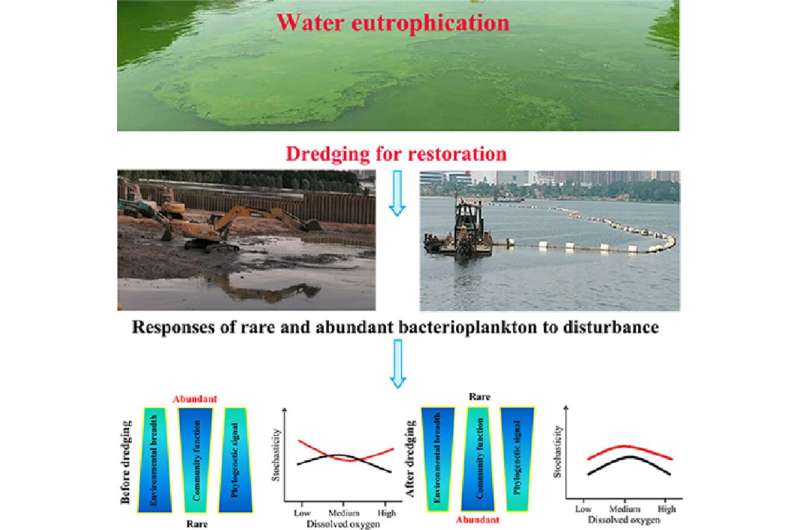Ecological mechanism behind dredging revealed to mitigate lake cyanobacterial blooms

Cyanobacterial blooms caused by water eutrophication have become a global environmental problem. Dredging, alternatively known as removal of sediment, has been reported as an effective approach for mitigating cyanobacterial blooms, and plays important roles in enhancing water quality of urban lakes. However, the research on the ecological mechanisms behind dredging is not deep enough.
Taking Lake Nanhu in Wuhan, China as the research object, associate Prof. Wan Wenjie and Prof. Yang Yuyi, together with colleagues from the Wuhan Botanical Garden, collaborating with Prof. Hans-Peter Grossart from the Leibniz Institute of Freshwater Ecology and Inland Fisheries (IGB) in Germany, determined bacterioplankton community composition along with water and sediment physicochemical properties before and after dredging.
They also evaluated environmental adaptation of rare and abundant bacterioplankton to dredging disturbance by using some statistical analysis methods.
In addition, they also found that stochastic processes dominate community assemblies of both rare and abundant bacterioplankton before and after dredging. Water dissolved oxygen plays decisive roles in adjusting the balance between stochastic and deterministic processes of community assemblies of both rare and abundant bacterioplankton. They have proposed that community assembly can be used a bio-indicator to reflect community function of bacterioplankton.
The results of this study show that the rare bacterioplankton presents broader environmental breadths and stronger phylogenetic signals than the abundant bacterioplankton before and after dredging. This study first reveals that the rare bacterioplankton exhibits stronger environmental adaptation to dredging disturbance than the abundant bacterioplankton.
These findings provide new insights for diversity maintenance of rare and abundant bacterioplankton, and may enrich the theoretical basis for the environmental policy of dredging measures to mitigate cyanobacterial blooms.
The findings have been published in Water Research, titled "Stronger environmental adaptation of rare rather than abundant bacterioplankton in response to dredging in eutrophic Lake Nanhu (Wuhan, China)."
More information: Wenjie Wan et al. Stronger environmental adaptation of rare rather than abundant bacterioplankton in response to dredging in eutrophic Lake Nanhu (Wuhan, China), Water Research (2020). DOI: 10.1016/j.watres.2020.116751
Provided by Chinese Academy of Sciences



















